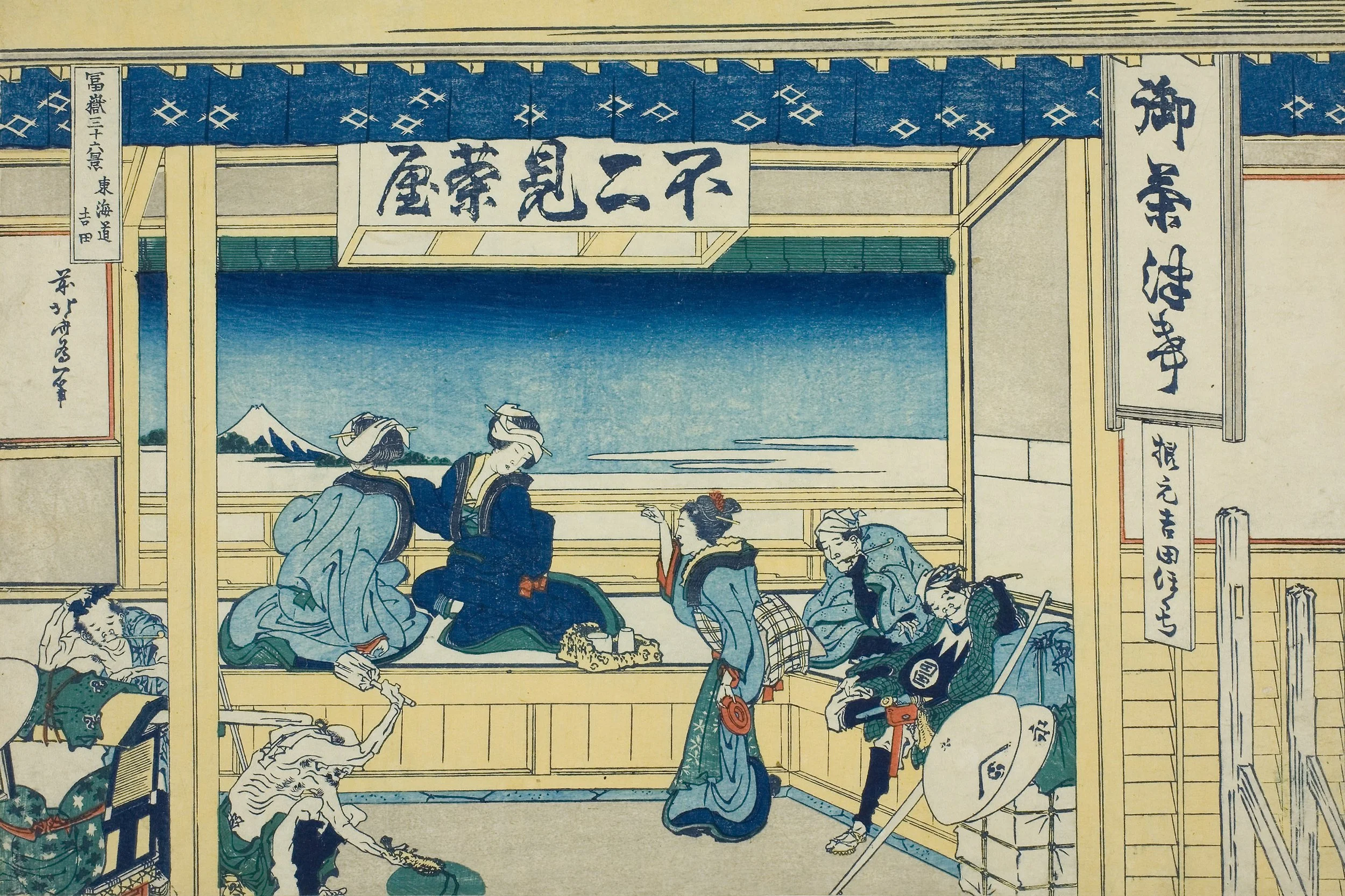23.Noborito Bay 登戸浦
Nobuto-ura
Present-day Nobuto area, Chūō Ward, Chiba City, Chiba Prefecture.
The torii gate depicted is that of the existing Tōwatari Shrine, commonly known as Nobuto Shrine.
Today, the gate stands on land—
Chiba has undergone significant land reclamation.
A family enjoying clam digging is cheerfully depicted.
A peaceful coastal scene.
A thatched-roof house is discreetly nestled in the hillside,
like a hidden detail in the picture.
Were it to stand out, it would interfere with the seaside scene Hokusai wished to portray.
In Nobuto-ura,
the usual composition of a convex Fuji rising from a concave foreground
is reconfigured:
the bay’s concave curve and the torii gate rising convexly from it form the new structure.
Hokusai excels at compositional contrasts.
The torii-centered composition quietly incorporates a range of contrasts:
Convex and concave (torii and bay)
Stillness and motion (torii and the people clam digging)
Large and small (torii and Mount Fuji)
Straight and curved lines (torii and bay)
All of these contrasts revolve around the torii as the focal point.
One realizes the entire composition is structured around visual contrast.
And Hokusai pulls off this variety of contrasts
with remarkable ease.
Hokusai’s aesthetic sensibility resides here.
12
24.Toukaido Yoashida 東海道吉田
Tōkaidō Yoshida
Present-day Toyohashi City, Aichi Prefecture.
The depicted teahouse is said to have stood in Shimogoi Village, west of Yoshida-juku—
now part of Toyohashi City’s Shimogoi district.
The signs read:
“Ochazuke” (rice with tea)
“Nemoto Yoshida Hokuchi”
In modern terms, this would mean
“Original Yoshida Fire Kindling.”
Hokuchi refers to material used to preserve fire, ignited with flint.
Yoshida, it is said, was the first town from which one could see Mt. Fuji when traveling east from the west.
A roadside rest stop for travelers.
Yet although it's a teahouse scene, no one is drinking tea.
On the left, two kago bearers—
one is fixing his straw sandals, the other watches.
Both gaze downward.
On the right, two male travelers—
also with their eyes cast down.
Then, from the shared downward gaze of all these figures,
a female passenger seated in a kago suddenly stands upright.
Her finger points toward Mt. Fuji.
Two women sitting on the koagari (raised tatami area) function like a gate.
One faces forward, the other backward.
Like komainu, the guardian lion-dogs at Shinto shrines—one with open mouth, one closed.
They frame the visual pathway from the pointing finger toward Mt. Fuji.
This composition is a textbook example of gaze direction.
While numerically symmetrical, it is dynamically structured.
The axis of vision is diagonal.
A composition structured entirely by human figures—
and yet calculated with such precision—
is exceedingly rare.
Guiding the eye through movement,
every gesture is meaningful.
There’s no time to sit and drink tea.
Hokusai’s aesthetic sensibility resides here.

